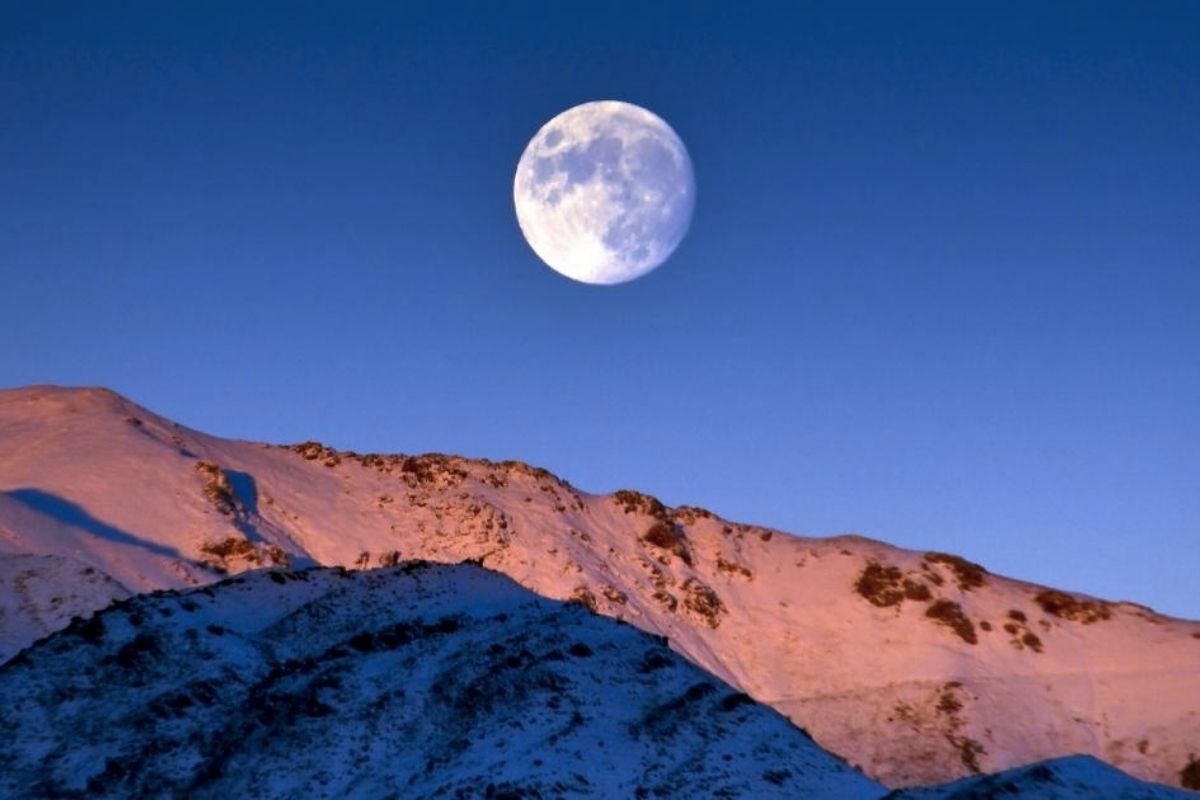February’s full moon arrives at its top on Wednesday and is known as the Snow Moon. The moon will be at its fullest enlightenment at roughly 11:59 a.m. ET the evening of February 16, as per Old Farmer’s Almanac.
For the best perspective on the Snow Moon, skywatchers ought to notice it on this evening or on the prior night.
The significance of the name Snow Moon is genuinely clear, it comes from the way that February is the month where the United States will in general experience weighty snowfall.
Old Farmer’s Almanac says that the name was first utilized during the 1760s by Captain Jonathan Carver. The early adventurer of North America and the creator of many travel guides, Carver composed the name for this time of the year was the Snow Moon in light of the fact that “more snow commonly falls during this month than any other in the winter.”
Old Farmer’s Almanac says that Carver’s doubts are upheld by information from the National Weather Service which shows that February is to be sure the United States’ snowiest month.
Different Names for February’s Full Moon
The vast majority of the names utilized for full moons come from Native American, Colonial American, and European sources, with each name regularly used to depict the whole lunar month.
One elective name for the Snow Moon additionally centers around the period’s cruel atmospheric conditions, the Storm Moon.
Numerous other elective names for the Snow Moon that begin from Native Americans are revolved around creatures. The Cree public, whose space incorporated a huge region across the thing is presently Canada going from east of Hudson Bay and James Bay as far west as Alberta and Great Slave Lake as indicated by Britannica, named it the Bald Eagle Moon.
Likewise utilizing the bird topic was the Haida public, who had regions in British Columbia, Canada, and Alaska, who called February’s full moon the Goose Moon.
The Ojibwa clan of what is currently southern Canada, the northern Midwestern United States, and Northern Plains, called February’s full moon the Bear Moon, while the Tlingit people groups of the Pacific Northwest Coast of North America called it the Black Bear Moon.
Both the Dakota public and a portion of the Algonquin clan named the February full moon after somewhat less wild and more modest vertebrates, calling it the Raccoon Moon and Groundhog Moon individually.
One more subject for this colder time of year full moon for Native Americans mirrored the absence of assets and food brought by the season.
Old Farmer’s Almanac says that the Cherokee referred to February as the “Long stretch of the Bony Moon” and had the elective name for the Snow Moon of the Hungry Moon.
For Buddhists, this full moon compares with the second most significant celebration of the year, Māgha Pūjā. As per NASA, the festival is hung on the full moon day of the third lunar month in Cambodia, Laos, Thailand, and Sri Lanka, and on the full moon day of Tabaung, Myanmar.
Read More: Us-Canada Ambassador Bridge Resumes After Police Clear Dissenters
When Are the Next Full Moons in 2022?
The following full moon in 2022 is the Worm Moon which will be completely enlightened on March 18 at 3:17 a.m. The accompanying table shows the other’s full moons, their dates, names, and times in U.S. Eastern Time.
- March 18 Worm Moon 3:17 a.m.
- April 16 Pink Moon 2:55 p.m.
- May 16 Flower Moon 12:14 a.m.
- June 14 Strawberry Moon 7:52 a.m.
- July 13 Buck Moon 2:37 p.m.
- August 11 Sturgeon Moon 9:36 p.m.
- September 10 Harvest Moon 5:59 a.m.
- October 9 Hunter’s Moon 4:55 p.m.
- November 8 Beaver Moon 6:02 a.m.
- December 7 Cold Moon 11:08 p.m.
Read More: Russia Will Debate The United States In A Rare Un Security Council Meeting



